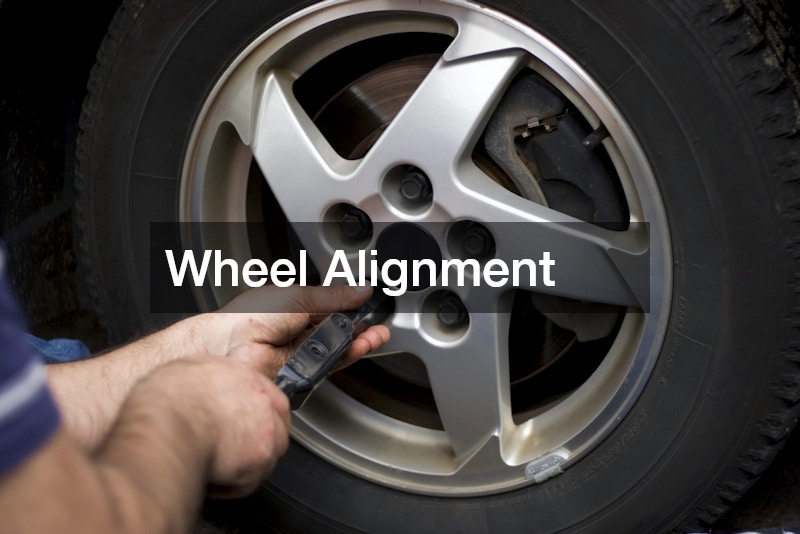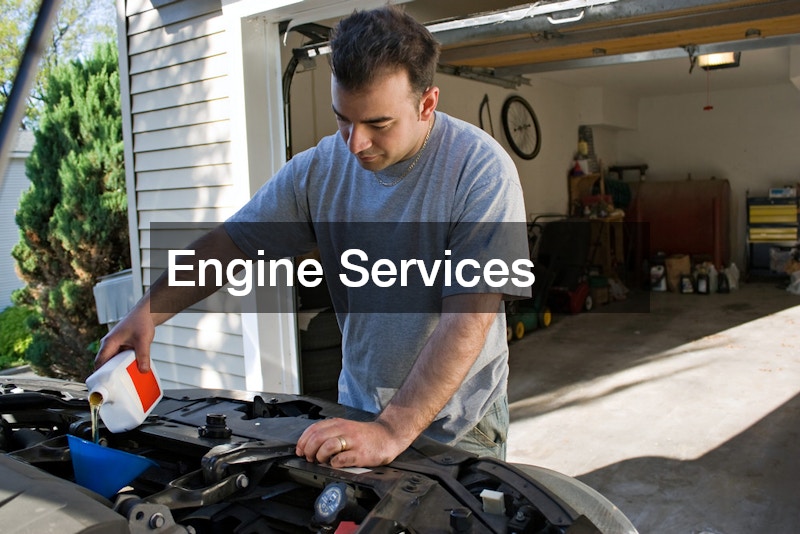
In the fast-paced world of today, vehicles have become an indispensable part of our lives. They provide us the convenience, speed, and mobility required to navigate our daily routines with ease. However, like any other form of machinery, they require periodic maintenance and repair to function optimally. This is where having a thorough automotive checklist comes into play. With the correct guidelines and a well-structured checklist, you can ensure that your vehicle is in tip-top shape. Whether it’s a routine oil change, dealing with squealing brakes, or simply needing new tires, a comprehensive automotive checklist can save you time, money, and stress over the long haul.
Auto Part Replacement

Auto part replacement is an integral aspect of vehicle maintenance. Every vehicle, no matter how well it is maintained, will eventually need parts replaced. Whether it’s due to wear and tear or damage, the need for part replacement is inevitable. The key is knowing when and how to replace faulty parts before they lead to more significant issues. Using an automotive checklist can guide you through the process, ensuring no detail is overlooked when you’ve mustered the courage to tackle repairs or replacements yourself.
For those who are not car-savvy, consulting with a professional mechanic can also be valuable. Mechanics are trained to diagnose issues with precision, determining which parts are defective or nearing failure. Regular visits to a car repair garage can help you catch issues early, allowing you to budget and plan for the necessary auto repairs. Parts such as brake pads, belts, and filters often feature prominently on a responsible vehicle owner’s automotive checklist.
Maintaining a comprehensive record of past replacements and repairs is also helpful for future diagnostics. By keeping track of what has been done, you can effortlessly communicate with your mechanic or alignment shop about any continuing concerns. For those doing the work themselves, having a record serves as a guidepost for what might need attention soon. In either scenario, paying attention to these details can save substantial amounts of money and prolong the life of your vehicle.
Tire Replacement
The importance of new tires cannot be overstated. Tires are the only part of the vehicle that comes into direct contact with the road, and their condition significantly affects overall safety and vehicle performance. While many drivers wait until they experience a flat or damaged tire to consider replacement, a proactive approach using an automotive checklist ensures that replacements are made before any potential incidents. Regular inspections are crucial, as even a daily commute can cause gradual wear that may go unnoticed until it’s too late.
When you’re in the market for new tires, consider the driving conditions you’ll most frequently encounter. Different tires are designed to suit distinct environments, from the fluctuating icy paths during winter to the hot, slick roads of summer. Using your automotive checklist to note the specifics of your driving habits will aid greatly when discussing options with a tire specialist. This attention to detail ensures that you’re not only getting durability and reliability but also the best performance in your usual driving contexts.
Oil Services
Regular oil changes are an essential part of any comprehensive automotive checklist. Oil plays a crucial role in your vehicle’s engine, providing lubrication that reduces heat and friction among moving parts. Over time, oil breaks down and accumulates dirt, requiring replacement to continue protecting your engine effectively. By scheduling routine oil services, you ensure that your engine remains clean and efficient, translating to better fuel economy and reduced emissions.
When planning oil changes, consult your automotive checklist to determine how often to perform the service. The frequency of oil changes depends on a variety of factors, including the type of oil used, the age of your vehicle, and your typical driving conditions. While many modern vehicles can go longer between oil changes compared to older models, sticking to the schedule outlined in your vehicle’s manual is a sound practice.
Have a conversation with your mechanic about the best oil type for your vehicle, as not all oils are created equal. A qualified car repair garage will provide you with options ranging from synthetic to conventional oils, all varying in protection level and price. This is another instance where your automotive checklist is invaluable – it ensures you’re knowledgeable about when your next oil change is due and connects you with professionals who can help keep your engine in peak condition.
Wheel Alignment

Wheel alignment is a service often neglected until a noticeable problem arises, but it plays a critical role in vehicle maintenance and safety. Misalignment can stem from several causes, such as hitting a pothole, encountering an unexpected bump, or simply the passing of time. An automotive checklist will remind you to check your alignment at regular intervals, enabling you to catch issues before they escalate into something costlier.
The professionals at an alignment shop are equipped with technology that precisely measures your wheel alignment. They can adjust your vehicle’s angles to meet manufacturer specifications, promoting even tire wear and optimizing handling. Using your automotive checklist, you can track alignment history, ensuring consistency and safety without compromising the life expectancy of your tires.
Well-aligned wheels contribute significantly to a smooth driving experience, minimizing vibrations and the tendency for the vehicle to drift off course. This not only offers peace of mind during day-to-day commutes but also prolongs the lifespan of your tires and suspension system. Regular alignments are an investment in safety that pay ongoing dividends, a crucial element to include in any informed driver’s automotive checklist.
Transmission Services
Transmission services are often considered among the most intricate of automotive repairs. The transmission is a complex system responsible for transmitting power from the engine to the wheels, and when issues occur, they can severely affect vehicle function. An automotive checklist is indispensable here, ensuring regular maintenance and early detection of potential problems, which in turn can prevent more serious—and more costly—issues down the road.
Transmission issues may present as slipping, delayed engagement, or strange noises—a signal that a visit to an auto repair shop should be imminent. A mechanic has the necessary tools and expertise to perform a full diagnostic, pinpointing the exact source of the trouble. Whether it’s flushing the transmission fluid or addressing more profound repairs, systematic tracking using an automotive checklist can address them before a complete overhaul becomes necessary.
Regular maintenance tasks for transmissions can include fluid changes and inspections to check for leaks or worn components. Maintenance guidelines vary depending on the vehicle’s make and model, but by sticking to the guidelines written in your automotive checklist, you maintain a structured routine that keeps the transmission in good working order. Proactive care helps mitigate the risk of transmission failure, securing your investment in the vehicle and the safety of your driving experience.
Brake Repair
Brakes are one of the most critical safety components of a vehicle, and maintaining them should be a top priority on your automotive checklist. Squealing brakes often indicate that you need to replace the brake pads or address other underlying issues. These sounds can sometimes be more than just a minor nuisance and are a precaution against failing brake systems that could compromise your safety on the road.
If you notice squealing brakes, it’s a signal to inspect your braking system immediately. A professional mechanic will conduct a thorough evaluation to determine the condition of your pads, rotors, and other parts, recommending necessary repairs. Regular maintenance checks included in your automotive checklist can help catch these issues early before they escalate into costlier and more complex repairs.
Preventative brake maintenance should ensure the following: brake fluid is at an optimal level, brake lines are intact, and the entire system is functioning without hitches. Keeping a record of your brake evaluations on your automotive checklist offers peace of mind, knowing your vehicle is operating safely. Additionally, it enables you to maintain a schedule that prevents possible brake failure and extends the life of your vehicle’s braking system.
Engine Services

The engine is the heart of any vehicle, and keeping it in excellent condition is paramount. A consistent automotive checklist assists in tracking various engine services necessary to maintain optimal performance and fuel efficiency. Regular engine tune-ups are crucial and involve examining spark plugs, fuel injectors, and other components that contribute to powerful engine performance.
Consulting a trusted mechanic can help you assess what kind of engine service your vehicle may require. Mechanics can use diagnostic tools to uncover specific problems that might not be visible to the naked eye. This, combined with a comprehensive automotive checklist outlining past services, allows for a detailed and informed discussion about your vehicle’s current state and future needs.
Routine inspections should include checking for leaks, unusual noises, and any smoke emissions. Each finding is worth noting in your automotive checklist to track recurring issues. When addressed systematically, these checks help you avert performance problems, prolong your engine’s longevity, and contribute to a safe, efficient drive every time you hit the road.
Electrical Diagnostics
Modern vehicles rely heavily on intricate electrical systems that control everything from lighting and power windows to engine management systems. Addressing electrical issues can be daunting, but an automotive checklist serves as a helpful tool in navigating these challenges. Even those unfamiliar with the nuts and bolts of car repairs can use a simple list to identify potential issues that require professional intervention.
Diagnosing electrical problems often involves specialized equipment found at a car repair garage. Skilled mechanics are trained to interpret these diagnostics and provide specific solutions tailored to your vehicle’s needs. By keeping an automotive checklist detailing symptoms like dashboard warnings or erratic behavior, you support your mechanic in finding swift, effective solutions.
Electrical diagnostics should also encompass checking for blown fuses or worn wires, which can cause a cascade of issues if not addressed. Including these routine checks in your automotive checklist can lead to early detection and help prevent potential lasting damage. Over time, this proactive approach can save substantial sums of money and assure you of consistent performance whenever you’re on the road.
Battery Services
A reliable battery is crucial for starting your vehicle and powering all its electrical components. Regular battery checks are a staple of any solid automotive checklist, ensuring you’re never left stranded waiting for a jump start. Most drivers have experienced the frustration of a dead battery at the least convenient time, but proactive measures can help you avoid this headache.
Monitoring the age of your battery and conducting voltage checks can inform you when it’s nearing replacement time. Many car repair garages offer complimentary battery inspections, allowing professionals to suggest preventative replacements if needed. Including such checks in your automotive checklist ensures you’re always prepared, minimizing the risk of unexpected system failures.
Ensuring secure battery connections, keeping terminals clean, and being aware of your vehicle’s specific battery demands are all part of a comprehensive battery maintenance routine. Using your automotive checklist to track these actions promotes responsible vehicle ownership, guaranteeing that you’re reducing the risk of sudden, inconvenient battery troubles and maintaining the smooth operation of all your car’s electrical features.
Windshield Services

Windshield replacements are sometimes necessary when cracks or chips compromise your view of the road. Not only do they impair visibility, but they can also undermine the structural integrity of your vehicle in the event of an accident. An automotive checklist emphasizes the importance of addressing small chips before they expand into larger cracks requiring full windshield replacements.
A small chip or crack can often be repaired quickly and affordably, making it crucial to inspect your windshield and note any damage on your automotive checklist. Regular inspections, paired with prompt repairs, can prevent more costly replacements. Drivers who spot damage early and take swift action benefit from enhanced safety and maintain their vehicle’s resale value.
In instances where a windshield replacement is unavoidable, sourcing a reputable service center ensures efficient and precise work. Certified professionals guarantee proper installation, which in turn aids in maintaining the vehicle’s safety features and comfort. Using an automotive checklist to monitor the condition of your windshield not only safeguarding your investment but also ensuring that your view of the road is always unobstructed.
Conclusion
A comprehensive automotive checklist is a valuable asset for any vehicle owner. It transforms the often-complicated process of car maintenance into manageable and proactive steps, ensuring adherence to routine checks and repairs. From oil changes to squealing brakes and everything in between, a systematic checklist helps vehicle owners anticipate and address issues before they become costly and disruptive. Regular maintenance guided by this structured approach not only enhances vehicle longevity but also contributes to safety and performance during every drive.